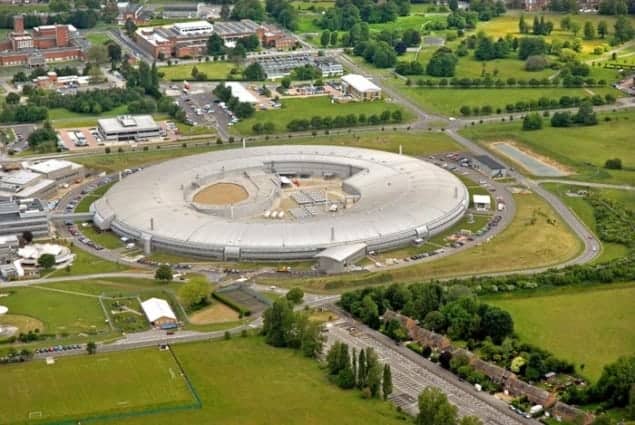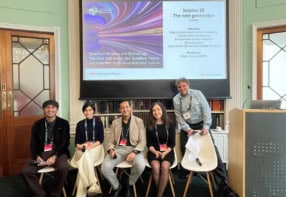
The Diamond third-generation synchrotron light source in the UK has received £110 m of funding that will allow it to complete 10 more beamlines, bringing the total number of beamlines at the facility to 32. The planned upgrade, to be fully completed by 2017, will allow researchers to study nanometre-scale objects such as quantum dots and to resolve the structure of objects smaller than 1 μm.
The bulk of the money (£97.4 m) comes from the Large Facilities Capital Fund (LFCF), which supports investments made by Research Councils UK – the umbrella organization for the seven UK funding councils – in large research facilities and infrastructure. The remaining £13.8 m comes from the Wellcome Trust – a UK-based independent charity.
Opened in 2007 near Didcot in Oxfordshire, the £260 m Diamond synchrotron is the largest UK-funded scientific facility. It consists of a linear accelerator that accelerates electrons to energies of 100 MeV. After being further accelerated to 3 GeV in a booster ring, the electrons are then sent to a 650 m diameter storage ring, where they produce X-rays as they pass through magnetic devices called “undulators”, which force the electrons along a sinusoidal path.
Ten more beamlines
This radiation is then sent down beamlines and used in a range of experiments from condensed-matter physics to biology. The Diamond synchrotron currently has 17 operational beamlines, which in two years’ time will be extended to 22. The £110 m of funding, dubbed Diamond Phase III, will allow 10 more beamlines, bringing the total number to 32.
“Given the present situation in the economy, we are very grateful of the support of the government and the Wellcome Trust,” Gerard Materlik, chief executive of Diamond, told physicsworld.com. Materlik says that the design phase can now begin for the scientific instruments that could be put on the 10 beamlines.
Announcing the funding yesterday, Peter Mandelson, secretary of state of business, innovation and skills said that the beamlines “could potentially benefit nearly every aspect of our lives and lead to applications such as providing high-resolution 3D images of biological samples, which will further our knowledge of diseases and help to develop new therapies for problems as diverse as Parkinson’s and hip replacements”.
Robert Kirby-Harris, chief executive at the Institute of Physics, which publishes physicsworld.com, welcomed the investment. “Our Diamond Light Source is a world-leading facility that uses ‘brilliant beams of light’ to investigate the true nature of materials,” he says. “Diamond will lead to advances in a wide range of fields from new therapies for disease treatment, environmental monitoring to the development of ultra-fast electronic devices.”



